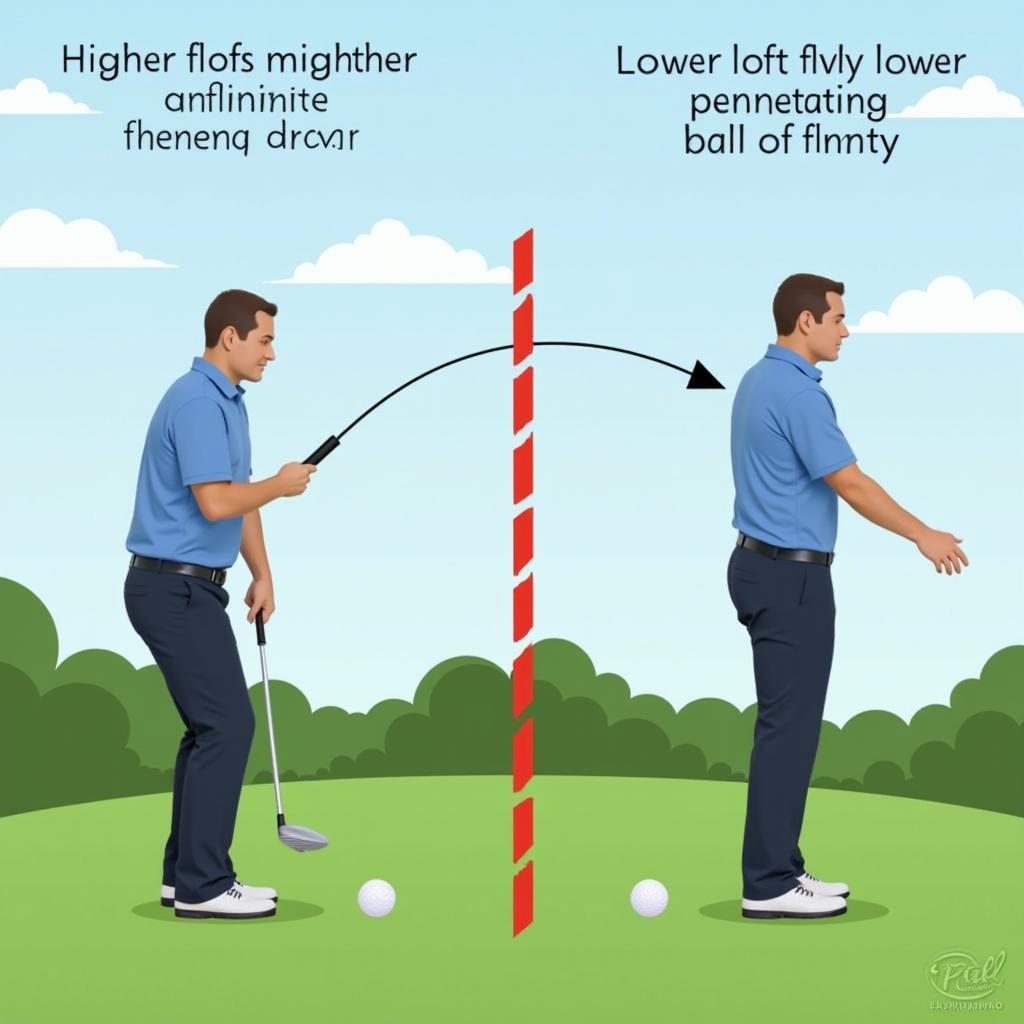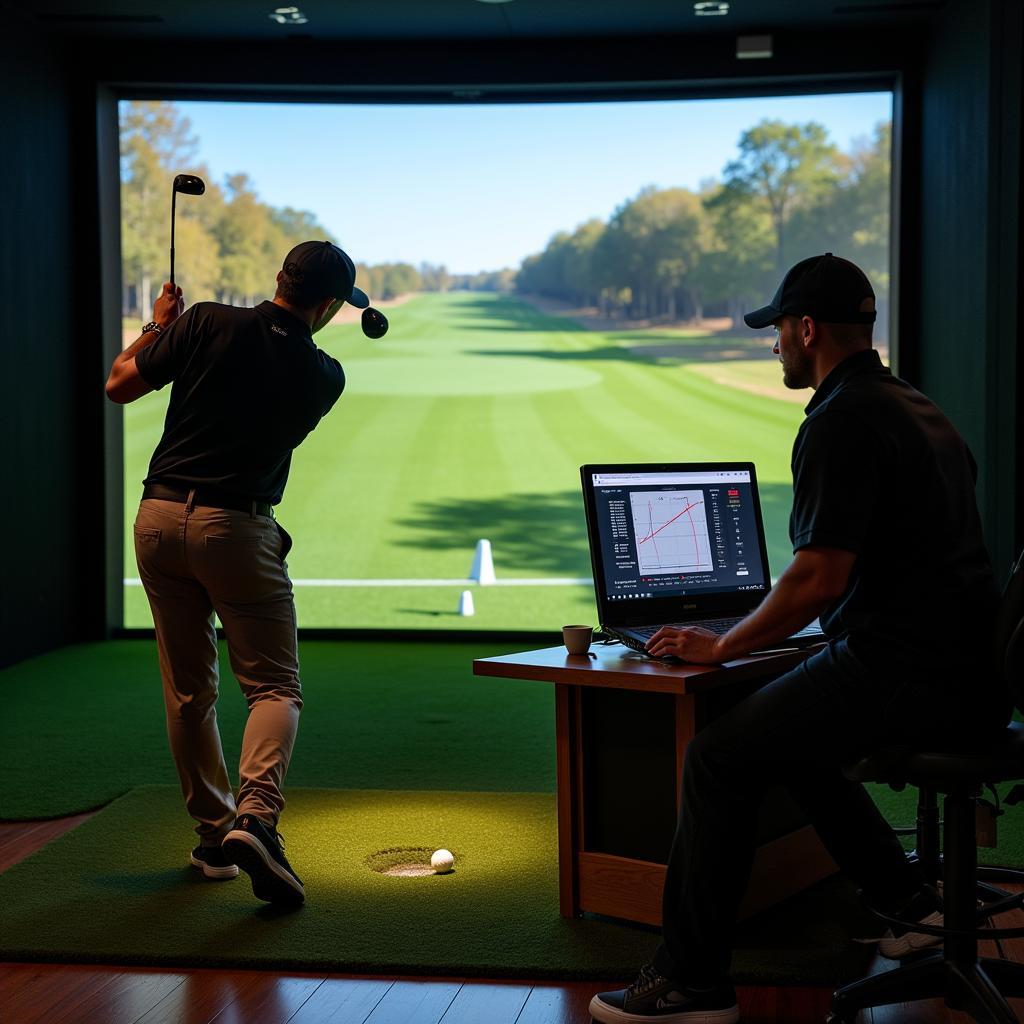Choosing the correct driver loft is crucial for maximizing distance and accuracy off the tee. It’s not a one-size-fits-all scenario, and understanding how loft influences your game can significantly impact your scores. This guide will delve into the key factors to consider when selecting the perfect loft for your driver, helping you unleash your full potential on the golf course.
Understanding Driver Loft and Its Impact
Driver loft refers to the angle of the clubface relative to the vertical. This angle directly affects launch angle and spin rate, two crucial elements determining ball flight and distance. A higher loft generally leads to a higher launch angle and more spin, while a lower loft results in a lower launch angle and less spin. Finding the right balance between these factors is key to optimizing your drives.
Choosing the right loft isn’t just about hitting the ball far; it’s about hitting it consistently and accurately. A driver with too much loft can lead to ballooning shots that lose distance due to excessive backspin. Conversely, a driver with too little loft can produce low, running shots that may not carry far enough, especially for players with slower swing speeds.
Choosing the proper loft involves several factors, including clubhead speed, angle of attack, and desired ball flight. Let’s explore each of these in detail.
Factors Influencing Loft Selection
Clubhead Speed: The Foundation of Loft Choice
Your clubhead speed is the most significant factor in determining the ideal driver loft. Generally, slower swing speeds benefit from higher lofts (10.5 degrees or more) to maximize launch angle and carry distance. Faster swing speeds, on the other hand, can handle lower lofts (9.5 degrees or less), generating optimal launch conditions with less loft.
Angle of Attack: Up or Down?
Your angle of attack, whether you hit up or down on the ball, also plays a role. Players who tend to hit up on the ball (a positive angle of attack) can often use a lower loft than those who hit down (a negative angle of attack). A positive angle of attack naturally increases launch angle, reducing the need for extra loft.
Desired Ball Flight: Shaping Your Shots
Your preferred ball flight is another consideration. Do you prefer a high, towering draw or a lower, penetrating fade? A higher loft will generally promote a higher, draw-biased trajectory, while a lower loft can encourage a lower, fade-biased flight.
 Driver Loft and Ball Flight Comparison
Driver Loft and Ball Flight Comparison
Matching Loft to Your Game
So, how do you put it all together? Consider the following guidelines:
- Swing Speed under 85 mph: Consider lofts between 12 and 14 degrees.
- Swing Speed between 85 and 95 mph: Lofts between 10.5 and 12 degrees are often suitable.
- Swing Speed between 95 and 105 mph: Look at lofts between 9.5 and 10.5 degrees.
- Swing Speed over 105 mph: Lofts of 9 degrees or less might be optimal.
These are just general guidelines, and individual fitting is highly recommended. A professional fitter can analyze your swing and ball flight to determine the precise loft that maximizes your distance and accuracy.
Finding Your Perfect Driver Loft
The quest for the perfect driver loft is a personal journey. While general guidelines can provide a starting point, the best way to determine the ideal loft for your game is through professional fitting. Don’t be afraid to experiment and seek expert advice to unlock your full driving potential.
 Professional Driver Fitting Session
Professional Driver Fitting Session
Conclusion
Choosing the right loft on your driver is a critical decision for any golfer looking to improve their game. By considering factors like clubhead speed, angle of attack, and desired ball flight, you can make an informed decision and maximize your driving performance. Remember, the perfect loft is not a universal number but a personalized choice based on your individual swing characteristics. sim 2 driver head only can be a great option to explore.
FAQs
- What happens if my driver loft is too high? A loft that’s too high can cause ballooning shots with excessive backspin, resulting in loss of distance and accuracy.
- What happens if my driver loft is too low? A loft that’s too low can lead to low, running shots that may not carry far enough, particularly for golfers with slower swing speeds.
- How do I know what my swing speed is? You can measure your swing speed using a launch monitor or have it measured at a golf store or professional fitting.
- Can I adjust the loft on my driver? Many modern drivers come with adjustable hosels that allow you to change the loft by a few degrees.
- How often should I get my driver loft checked? It’s a good idea to have your driver loft checked at least once a year or if you notice a significant change in your swing or ball flight.
- Is a higher loft always better for slower swing speeds? While higher lofts generally benefit slower swing speeds, it’s essential to find the right balance. Too much loft can lead to ballooning shots, even for slower swingers.
- Is a lower loft always better for faster swing speeds? While faster swingers can typically handle lower lofts, going too low can sacrifice carry distance and forgiveness.
Common Scenarios and Questions
-
Scenario: A golfer with a slower swing speed struggles to get the ball airborne. Question: Should I consider a higher lofted driver? Answer: Yes, a higher lofted driver (12 degrees or higher) could be beneficial for increasing launch angle and carry distance.
-
Scenario: A golfer with a faster swing speed slices the ball consistently. Question: Could a lower lofted driver exacerbate the slice? Answer: A lower lofted driver might make it more challenging to control the slice. It’s crucial to consider the angle of attack and seek professional fitting advice.
Further Exploration
- Check out our article on “Understanding Golf Club Lofts” for a deeper dive into the technical aspects of loft.
- Explore our range of sim 2 driver head only for high-performance driver options.
Contact Us
For any assistance, please contact us:
- Phone: 0902476650
- Email: [email protected]
- Address: 139 Đ. Võ Văn Kiệt, Hoà Long, Bà Rịa, Bà Rịa – Vũng Tàu, Việt Nam
Our customer service team is available 24/7.





